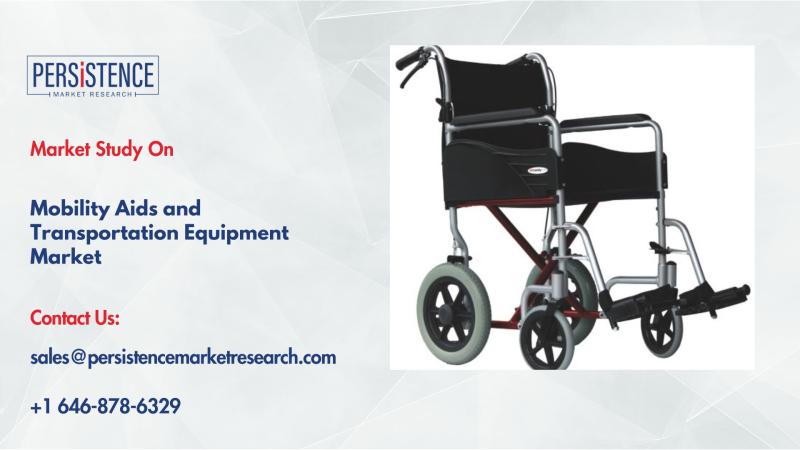Mobility Aids and Transportation Equipment Market: A Comprehensive Insight
The Mobility Aids and Transportation Equipment Market is undergoing rapid expansion as global populations age and healthcare infrastructure improves. This market comprises a range of products designed to support individuals with limited mobility, including wheelchairs, walkers, scooters, and patient lifts. The key drivers behind this growth include rising geriatric demographics, increasing incidence of disabilities, and growing awareness about mobility-enhancing technologies.
The wheelchair segment leads the product category due to its widespread application across all age groups with mobility challenges. From a regional standpoint, North America dominates the global market, owing to advanced healthcare facilities, significant spending on assistive technology, and favorable reimbursement policies. However, Asia-Pacific is emerging as a highly lucrative region due to its expanding elderly population and increased government initiatives for healthcare access.
Get a Sample PDF Brochure of the Report (Use Corporate Email ID for a Quick Response): https://www.persistencemarketresearch.com/samples/3363
Key Highlights from the Report:
• North America holds the largest share in the mobility aids and transportation equipment market.
• The wheelchair segment continues to lead product-based segmentation.
• Growing elderly population is a primary market driver.
• Technological innovations are redefining assistive mobility solutions.
• Home healthcare adoption significantly boosts demand.
• Asia-Pacific shows the fastest market growth through 2032.
Market Segmentation
The Mobility Aids and Transportation Equipment Market is broadly segmented based on product type into wheelchairs, mobility scooters, canes, crutches, walkers, patient lifts, and stair lifts. Among these, wheelchairs-both manual and electric-account for the largest share due to their necessity in hospitals, rehabilitation centers, and homecare settings. Electric mobility scooters are gaining traction due to ease of use and growing user independence.
End-user segmentation includes hospitals, home care settings, rehabilitation centers, and ambulatory surgical centers. Home care settings are experiencing robust growth due to increasing preference for aging-in-place among elderly patients. Technological integration, such as smart wheelchairs with GPS and health monitoring features, is further enhancing usage across varied consumer groups.
Regional Insights
North America remains the frontrunner in the mobility aids and transportation equipment market due to high disposable incomes, advanced healthcare systems, and strong public-private investments in assistive technologies. The United States, in particular, showcases significant demand driven by aging baby boomers and well-established reimbursement frameworks.
Asia-Pacific is projected to grow at the fastest pace during the forecast period. Countries such as China, Japan, and India are investing heavily in healthcare infrastructure, increasing awareness about disability rights, and offering subsidies for mobility equipment. These factors collectively fuel regional demand and foster growth opportunities.
Market Drivers
One of the primary drivers of the market is the increasing geriatric population worldwide, especially in developed countries where life expectancy is high. Older individuals are more prone to mobility impairments and chronic conditions such as arthritis and osteoporosis, which necessitate mobility aids. Additionally, a rising number of road accidents and injuries has heightened the demand for temporary and permanent mobility solutions.
Another factor contributing to market growth is the technological advancement in mobility aids. Companies are integrating features like voice control, GPS tracking, and Bluetooth connectivity in devices such as wheelchairs and scooters. These innovations not only improve user experience but also attract a younger demographic facing temporary disabilities.
The shift towards home-based healthcare services is also influencing the market positively. Many patients and families now prefer recovery and eldercare at home, which boosts the demand for portable and user-friendly mobility equipment. This trend is particularly notable in developed regions with strong healthcare insurance and homecare support.
Market Restraints
Despite a favorable growth environment, the market faces a few restraints. One significant challenge is the high cost of advanced mobility equipment, especially electric scooters and technologically integrated wheelchairs. In many developing regions, affordability remains a crucial barrier, limiting market penetration.
Additionally, lack of standardization and quality concerns in low-cost products impact user trust. While affordability is a key concern, it often leads to the influx of substandard products that may not meet safety and ergonomic requirements, thereby affecting consumer confidence.
Lastly, limited insurance coverage and reimbursement issues in several countries hinder the adoption of mobility aids. Although some regions offer robust coverage, others lag behind in implementing supportive financial policies, restricting patient access to quality mobility solutions.
Market Opportunities
Emerging markets offer immense opportunities for manufacturers and suppliers in the mobility aids space. Rapid urbanization, government support for disability inclusion, and rising healthcare investments in regions like Latin America, Southeast Asia, and Africa pave the way for increased product adoption.
Furthermore, the market is witnessing an uptick in demand for customized and aesthetically appealing mobility aids. Consumers are now looking beyond functionality, preferring ergonomic and stylish solutions that offer both comfort and confidence.
Collaborations and partnerships between medical institutions and manufacturers present another significant opportunity. Such alliances help in clinical testing, product validation, and direct-to-consumer strategies, enhancing overall credibility and accelerating market adoption.
Reasons to Buy the Report:
✔ In-depth analysis of market trends, drivers, restraints, and opportunities
✔ Data-driven insights from Persistence Market Research to guide strategic planning
✔ Comprehensive regional outlook and segmentation coverage
✔ Competitive landscape with key player profiling and recent developments
✔ Forecasts up to 2032 to support long-term investment decisions
Company Insights
The Mobility Aids and Transportation Equipment Market features several global and regional players working towards innovation, affordability, and expanded reach. Key players include:
1. Invacare Corporation
2. Sunrise Medical LLC
3. Stryker Corporation
4. Hill-Rom Holdings, Inc.
5. Pride Mobility Products Corp.
6. Ottobock SE & Co. KGaA
7. Drive DeVilbiss Healthcare
8. GF Health Products, Inc.
9. Medline Industries, Inc.
10. Karman Healthcare
Recent Developments:
• In 2023, Pride Mobility launched a new line of compact electric scooters with enhanced battery life and lightweight frame targeting urban users.
• Invacare Corporation announced a partnership with a telehealth platform to integrate remote monitoring with its power wheelchair line.
Conclusion
The Mobility Aids and Transportation Equipment Market is poised for substantial growth, driven by aging populations, technological advancements, and evolving consumer preferences. While challenges such as cost and insurance coverage persist, the market offers ample opportunities for innovation and expansion, particularly in emerging economies. Supported by insights from Persistence Market Research, stakeholders in this sector can make well-informed decisions and tap into the growing demand for enhanced mobility solutions.
About Persistence Market Research:
At Persistence Market Research, we specialize in creating research studies that serve as strategic tools for driving business growth. Established as a proprietary firm in 2012, we have evolved into a registered company in England and Wales in 2023 under the name Persistence Research & Consultancy Services Ltd. With a solid foundation, we have completed over 3600 custom and syndicate market research projects, and delivered more than 2700 projects for other leading market research companies’ clients.
Our approach combines traditional market research methods with modern tools to offer comprehensive research solutions. With a decade of experience, we pride ourselves on deriving actionable insights from data to help businesses stay ahead of the competition. Our client base spans multinational corporations, leading consulting firms, investment funds, and government departments. A significant portion of our sales comes from repeat clients, a testament to the value and trust we’ve built over the years.
Contact Us:
Persistence Market Research
G04 Golden Mile House, Clayponds Lane
Brentford, London, TW8 0GU UK
USA Phone: +1 646-878-6329
UK Phone: +44 203-837-5656
Email: sales@persistencemarketresearch.com
Web: https://www.persistencemarketresearch.com
This release was published on openPR.








